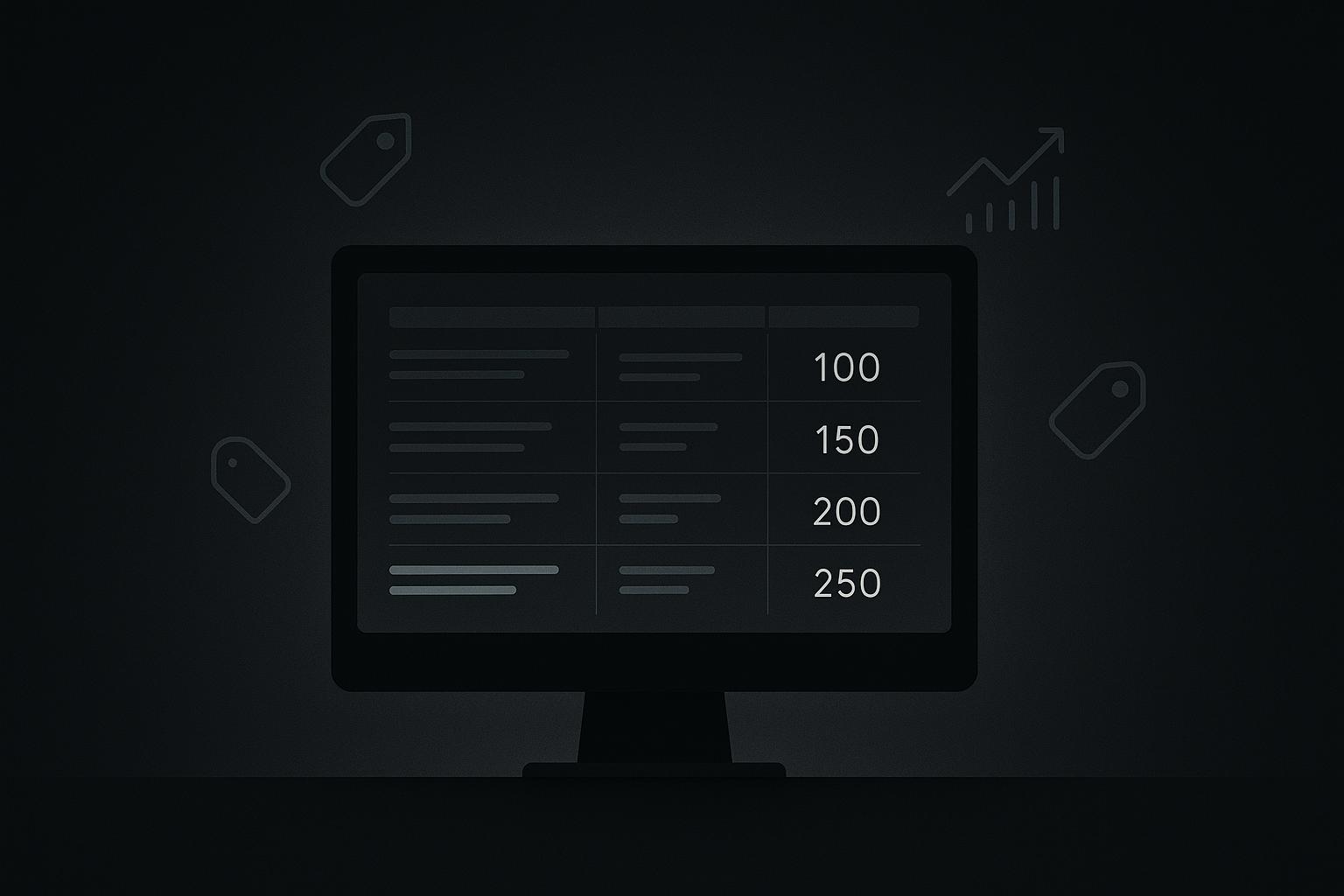AI-powered sentiment analysis helps you understand if text data - like reviews or social media posts - is positive, negative, or neutral. Combine it with web scraping, and you can transform raw online data into insights for better decisions.
Key Benefits:
- E-commerce: Spot trends in product reviews.
- Finance: Track market sentiment on social media.
- Healthcare: Analyze patient feedback to improve services.
- Tech: Identify key issues in bug reports.
Tools You’ll Need:
- Web Scraping: BeautifulSoup, InstantAPI.ai, or requests for extracting data.
- AI Libraries: NLTK, TextBlob, or Hugging Face for sentiment analysis.
- Visualization: Seaborn and Matplotlib to create charts.
Steps to Get Started:
- Scrape Data: Use tools like BeautifulSoup to collect text.
- Clean Data: Tokenize, remove stop words, and prepare text.
- Analyze Sentiment: Use models like TextBlob or Hugging Face.
- Visualize Results: Spot trends with graphs and charts.
Challenges and Solutions:
- Unstructured Data: Clean and normalize text using tools like NLTK.
- Accuracy Issues: Use advanced models like BERT for context.
- Scaling: Handle large datasets with tools like Apache Spark or AWS.
By combining AI tools with efficient workflows, you can turn raw text into actionable insights for any industry.
Tools and Frameworks for Sentiment Analysis on Scraped Data
Web Scraping Tools Overview
Web scraping tools like BeautifulSoup, requests, and InstantAPI.ai make data extraction simpler and more efficient. BeautifulSoup works alongside requests to extract and process web data seamlessly, while InstantAPI.ai provides a no-code solution, making it a great starting point for businesses venturing into sentiment analysis.
| Tool | Primary Use Case | Key Advantage |
|---|---|---|
| BeautifulSoup | HTML/XML parsing | Extracts data in a structured way |
| InstantAPI.ai | No-code scraping | AI-driven automation |
| Requests | HTTP operations | Reliable handling of connections |
AI Libraries for Sentiment Analysis
AI libraries transform raw text into meaningful sentiment data. Popular choices include NLTK, TextBlob, and Hugging Face.
- NLTK provides essential tools like tokenization, stemming, and sentiment analyzers, making it a go-to for text analysis.
- TextBlob simplifies sentiment classification using polarity-based methods, offering straightforward results.
- Hugging Face stands out with its transformer models, which are excellent at understanding context, including tricky nuances like sarcasm.
These libraries are the backbone of sentiment analysis workflows, helping you move from raw data to actionable insights. For visualizing sentiment trends, tools like Seaborn and Matplotlib are invaluable for creating clear and informative charts.
Selecting the right tools depends on your expertise and the specific needs of your project. Once chosen, the next step is integrating them into a cohesive sentiment analysis workflow.
Complete AI Project for Beginners - Web Scraping Steam to do Sentiment Analysis
sbb-itb-f2fbbd7
How to Perform Sentiment Analysis on Scraped Data
Once you have the right tools, the next step is setting up a structured process for sentiment analysis.
Step 1: Extract Data from Websites
You can use coding tools like BeautifulSoup or no-code platforms like InstantAPI.ai to gather reviews, posts, or articles.
from bs4 import BeautifulSoup
import requests
url = "your_target_website"
response = requests.get(url)
soup = BeautifulSoup(response.text, 'html.parser')
text_data = soup.find_all('div', class_='review-text')
Step 2: Prepare the Data for Analysis
Properly cleaning and organizing your text is crucial for accurate results. This involves steps like tokenizing the text, removing stop words, and standardizing its format:
import nltk
from nltk.tokenize import word_tokenize
from nltk.corpus import stopwords
def clean_text(text):
tokens = word_tokenize(text.lower())
stop_words = set(stopwords.words('english'))
cleaned = [word for word in tokens if word not in stop_words]
return ' '.join(cleaned)
Step 3: Apply Sentiment Analysis Models
Choose a sentiment analysis model based on your data needs. Here's a quick comparison of popular options:
| Model | Best For | Key Feature |
|---|---|---|
| VADER | Social media text | Context-aware scoring |
| TextBlob | Quick analysis | Simple polarity scores |
| Hugging Face | Complex analysis | Advanced contextual handling |
For example, using TextBlob to calculate sentiment polarity is straightforward:
from textblob import TextBlob
def analyze_sentiment(text):
analysis = TextBlob(text)
return analysis.sentiment.polarity
Step 4: Analyze and Visualize Results
Turn your analysis into actionable insights by visualizing the data. Use tools like pandas and seaborn to create charts showing sentiment trends or distributions:
import pandas as pd
import seaborn as sns
# Create sentiment distribution visualization
sentiment_df = pd.DataFrame({'text': texts, 'sentiment': sentiments})
sns.histplot(data=sentiment_df, x='sentiment', bins=20)
These visuals make it easier to spot trends, compare categories, or understand how sentiment changes over time. They help transform raw data into clear, actionable insights.
While this workflow provides a solid starting point, working with scraped data can still present challenges.
Common Challenges in Sentiment Analysis of Scraped Data
Dealing with Unstructured Data
Scraped data often needs thorough preprocessing to make it suitable for sentiment analysis. Here are some essential steps:
| Preprocessing Step | Purpose | Common Tools |
|---|---|---|
| Text Normalization | Standardizes text format | NLTK, spaCy |
| Language Detection | Ensures consistent language usage | langdetect |
| Duplicate Removal | Removes redundant entries | pandas |
After preprocessing, the next hurdle is teaching models to understand the subtleties of human language.
Improving Accuracy and Consistency
Language is tricky - sarcasm, idioms, and context-dependent meanings can confuse sentiment analysis models. Here's how to address these issues:
- Model Selection: Use advanced models like BERT that are better at understanding context.
- Training Data: Include diverse and domain-relevant datasets to improve model reliability.
- Validation: Apply cross-validation techniques to ensure the model performs consistently across different data subsets.
Once accuracy is improved, the focus shifts to scaling the analysis for large datasets.
Processing Large Data Volumes
Handling massive datasets efficiently requires the right tools and strategies. Solutions like Dask, Apache Spark, and AWS S3 simplify computation and storage, while Redis can speed up data retrieval through caching.
Some effective strategies include:
- Batch Processing: Keeps memory usage under control.
- Parallel Computation: Speeds up the analysis process.
- Cloud Storage: Ensures scalability for growing datasets.
- Result Caching: Reduces retrieval time for frequently accessed data.
For optimal performance, a batch size of around 10,000 records often works well. It's also important to monitor system resources and implement error-handling measures to avoid disruptions.
Experts emphasize the role of AI-driven automation in handling the complexities of scaling sentiment analysis.
Balancing efficiency, accuracy, and data quality is critical for transforming raw scraped data into meaningful insights. Each step in the analysis pipeline plays a role in achieving reliable results.
Summary and Final Thoughts
Key Points to Keep in Mind
Using AI-driven sentiment analysis with scraped data requires a mix of technical know-how and practical strategies. The goal is to ensure high-quality data while efficiently handling larger datasets.
| Phase | Focus Area |
|---|---|
| Data Collection | Use reliable tools and follow ethical guidelines |
| Processing | Ensure data is clean and standardized |
| Analysis | Use models that are accurate and well-validated |
| Implementation | Build systems that can scale effectively |
The real value comes from turning raw data into insights that can drive decisions, all while maintaining strong analysis capabilities as datasets grow.
What’s Next for Sentiment Analysis?
The future of sentiment analysis is tied to advancements in natural language processing (NLP). These improvements will make it easier to understand emotions and context in text data, opening up new opportunities for businesses and researchers.
Some of the most exciting developments on the horizon include:
- Integration with CRM systems: Combine sentiment analysis with customer relationship management tools for deeper insights.
- Better context and emotion detection: Improved tools to understand subtleties in text.
- Multilingual capabilities: More accurate analysis of emotional nuances across languages.
- Automated scaling: Easier deployment for large-scale, enterprise use.
Staying updated with these advancements while focusing on real-world applications will set organizations apart. By combining web scraping with sentiment analysis, businesses can better understand and respond to customer needs, creating a strong edge in their market.


